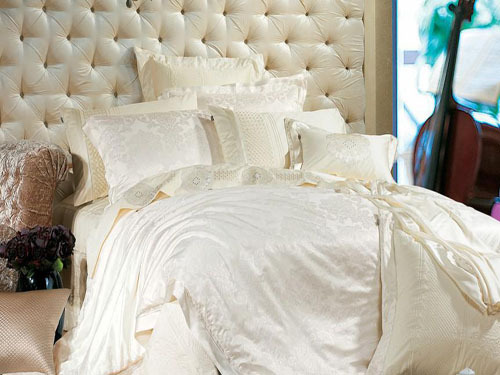Home Textile Product Design How to "Low Carbon"

Low-carbon is gradually entering people's lives. Green buildings, green computers, and green mobile phones ... everything from clothing, food, housing, and transportation to people's needs is combined with "green", or "low-carbon." In recent years, people have been paying more and more attention to the green issues of home textile products. Low-carbon economy is based on low energy consumption, low pollution, low emissions based on the development model, is being taken seriously by more and more home textile companies, relying on low-carbon build new competitiveness has become the inevitable choice for the development of home textile industry.
Home textile products, as a very important organic part of modern people's life, are most in close contact with people, and the demand for low carbon is even more immediate and urgent. Therefore, the home textile designer can not walk in the forefront of the times to meet people's requirements for low-carbon home textiles, is the embodiment of the level of the designer, but also its unshirkable responsibility.
“Low-carbon†means improvement and reexamination of the existing methods of production, technology, and craftsmanship. The industry must create new ones, but must also remove pollution, waste, and everything that does not meet low-carbon requirements. The concept of low carbon determines the future design thinking, methods and modes of home textile products.
How to design low-carbon home textile products, where is the entry point?
Comprehensive application of green materials
Home textiles are closely related to people's lives. Every day they have to "close contact" with users. In today's increasingly quest for healthy living, green environmental protection has become the driving force behind the development of the home textile industry. The demand of the market and consumers is the main reason for the home textile industry to embark on this trend. Low-carbon environmental protection, energy conservation and emission reduction have also become the consensus of the entire industry. In these two years, cotton, cotton, linen, vegetable fiber, and various kinds of home textile products have become the most popular products.
When talking about the green and low-carbon aspects of the home textile industry, Chairman Yang of the China National Textile and Apparel Association stated that this is the future direction of the home textile industry. When they communicate with enterprises, they all think that home textile products should consider the issue of green and low-carbon. Product R&D should be considered from the function of satisfying consumer demand. He uses a kind of fever material called Vic, for example. The heat-generating material is used in many clothes. Wearing winter wears skin temperature quickly, and it can be extended into the home textile industry. It can be made into bed sheets and people can sleep. When the temperature goes up to 2 degrees. Energy-saving concepts are both positive and negative, 2 degrees is energy-saving, air-conditioning heating can be saved, he said he hopes that the home textile industry in the function of more effort, bed sheets, quilts, towels, because more energy in the function , you can really achieve low-carbon green.
Comprehensive green production
For the home textile industry, the printing, dyeing, and weaving sectors in the past are also extremely prone to pollution. In order to reduce the pollution of the production process, home textile companies also have a lot of brains in technological innovation and innovation. As a well-known brand in this textile industry, Qin Ruigang, CEO of Kaisheng Home Textiles, stated that in the past few years, they have been controlling pollution and carbon emissions in the production process, and have produced green and healthy products in a more energy-saving and greener manner to cater to the current situation. The market trend also makes low-carbon become a real action, not just a slogan. In terms of printing and dyeing, the home textile industry shifts more from painting and dyeing to active printing and dyeing to ensure that the products fit the trend of low carbon and environmental protection.
In the increasingly fierce competition in the industry, regardless of the level of national policy advocacy or the consumer demand of the market, environmental protection and low carbon are the general trend. How to improve their green competitiveness, develop functional environmental protection products, and reduce energy consumption in the production process , to reduce pollution, for home textile companies are worth considering.
Low carbon in sales
When home textile companies sell finished products, they not only guide consumers to purchase products suitable for them, but also carry out a low-carbon environmental publicity campaign. Through the sales approach, the concept of customer's consumption is changed, so that they can use products with the highest efficiency and make the whole society have low carbon.
Printed Fabric,Rayon Printed Fabric,Printing Poplin Fabric,Printed Single Jersey Fabrics
SHAOXING LINGGE TEXTILE CO., LTD. , https://www.lingertex.com